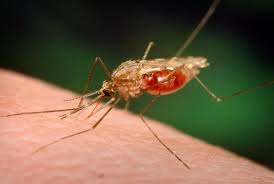Scale-up in effective malaria control dramatically reduces deaths

The number of people dying from malaria has fallen dramatically since 2000 and malaria cases are also steadily declining, according to the World malaria report 2014. Between 2000 and 2013, the malaria mortality rate decreased by 47% worldwide and by 54% in the WHO African Region – where about 90% of malaria deaths occur.
New analysis across sub-Saharan Africa reveals that despite a 43% population increase, fewer people are infected or carry asymptomatic malaria infections every year: the number of people infected fell from 173 million in 2000 to 128 million in 2013.
“We can win the fight against malaria,” says Dr Margaret Chan, Director-General, WHO. “We have the right tools and our defences are working. But we still need to get those tools to a lot more people if we are to make these gains sustainable.”
Between 2000 and 2013, access to insecticide-treated bed nets increased substantially. In 2013, almost half of all people at risk of malaria in sub-Saharan Africa had access to an insecticide-treated net, a marked increase from just 3% in 2004. And this trend is set to continue, with a record 214 million bed nets scheduled for delivery to endemic countries in Africa by year-end.
Access to accurate malaria diagnostic testing and effective treatment has significantly improved worldwide. In 2013, the number of rapid diagnostic tests (RDTs) procured globally increased to 319 million, up from 46 million in 2008. Meanwhile, in 2013, 392 million courses of artemisinin-based combination therapies (ACTs), a key intervention to treat malaria, were procured, up from 11 million in 2005.
Moving towards elimination
Globally, an increasing number of countries are moving towards malaria elimination, and many regional groups are setting ambitious elimination targets, the most recent being a declaration at the East Asia Summit to eliminate malaria from the Asia-Pacific region by 2030.
In 2013, 2 countries reported zero indigenous cases for the first time (Azerbaijan and Sri Lanka), and 11 countries succeeded in maintaining zero cases (Argentina, Armenia, Egypt, Georgia, Iraq, Kyrgyzstan, Morocco, Oman, Paraguay, Uzbekistan and Turkmenistan). Another 4 countries reported fewer than 10 local cases annually (Algeria, Cabo Verde, Costa Rica and El Salvador).
Fragile gains
But significant challenges remain: “The next few years are going to be critical to show that we can maintain momentum and build on the gains,” notes Dr Pedro L Alonso, Director of WHO’s Global Malaria Programme.
In 2013, one third of households in areas with malaria transmission in sub-Saharan Africa did not have a single insecticide treated net. Indoor residual spraying, another key vector control intervention, has decreased in recent years, and insecticide resistance has been reported in 49 countries around the world.
Even though diagnostic testing and treatment have been strengthened, millions of people continue to lack access to these interventions. Progress has also been slow in scaling up preventive therapies for pregnant women, and in adopting recommended preventive therapies for children under 5 years of age and infants.
In addition, resistance to artemisinin has been detected in 5 countries of the Greater Mekong subregion and insufficient data on malaria transmission continues to hamper efforts to reduce the disease burden.
Dr Alonso believes, however, that with sufficient funding and commitment huge strides forward can still be made. “There are biological and technical challenges, but we are working with partners to be proactive in developing the right responses to these. There is a strong pipeline of innovative new products that will soon transform malaria control and elimination. We can go a lot further,” he says.
While funding to combat malaria has increased threefold since 2005, it is still only around half of the US$ 5.1 billion that is needed if global targets are to be achieved.
“Against a backdrop of continued insufficient funding the fight against malaria needs a renewed focus to ensure maximum value for money,” says Fatoumata Nafo-Traoré, Executive Director of the Roll Back Malaria Partnership. “We must work together to strengthen country ownership, empower communities, increase efficiencies, and engage multiple sectors outside health. We need to explore ways to do things better at all levels.”
Ray Chambers, who has served as the UN Secretary-General’s Special Envoy for Malaria since 2007, highlights the remarkable progress made in recent years. “While staying focused on the work ahead, we should note that the number of children dying from malaria today is markedly less than 8 years ago. The world can expect even greater reductions in malaria cases and mortality by the end of 2015, but any death from malaria remains simply unacceptable,” he says.
Gains at risk in Ebola-affected countries
At particular risk is progress on malaria in countries affected by the Ebola virus. The outbreak in West Africa has had a devastating impact on malaria treatment and the roll-out of malaria interventions. In Guinea, Sierra Leone and Liberia, the 3 countries most severely affected by the epidemic, the majority of inpatient health facilities remain closed, while attendance at outpatient facilities is down to a small fraction of rates seen prior to the outbreak.
Given the intense malaria transmission in these 3 countries, which together saw an estimated 6.6 million malaria cases and 20 000 malaria deaths in 2013, WHO has issued new guidance on temporary measures to control the disease during the Ebola outbreak: to provide ACTs to all fever patients, even when they have not been tested for malaria, and to carry out mass anti-malaria drug administration with ACTs in areas that are heavily affected by the Ebola virus and where malaria transmission is high. In addition, international donor financing is being stepped up to meet the further recommendation that bednets be distributed to all affected areas.
 Follow
Follow